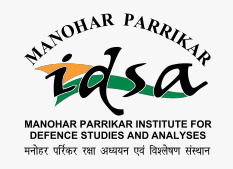
- This event has passed.
Webinar Discussion on India-Australia Bilateral Relations
February 10, 2022
Centre for Southeast Asia and Oceania organised a webinar discussion on India-Australia bilateral relations, where Col. Ravinder Pal Singh, Research Fellow at MP-IDSA, delivered a presentation on “Australia’s Strategic Posturing in Indo-Pacific: Imperatives for India”, on 10 February 2022 at 1500 hours (IST). Mr. Mahadevan Shankar, National Convenor for Defence and Security Working Group in the Australia-India Chamber of Commerce, joined as an external discussant while Cmde. Abhay K. Singh (Retd.), Research Fellow at MP-IDSA, joined as an internal discussant. Dr. Udai Bhanu Singh, Cluster Coordinator for Southeast Asia and Oceania Centre and Senior Research Associate at MP-IDSA, moderated the session. Ms. Shruti Pandalai, Associate Fellow at MP-IDSA, and Mr. Akash Sahu, Research Analyst at MP-IDSA, were also part of the discussion.
Executive Summary
India and Australia have improved their bilateral relations in the past decades to reach an alignment of their foreign policies. Even though Canberra’s loyalties may be more firmly rooted in treaty alliances such as ANZUS, than the QUAD, there is an acute realisation that China’s aggressive actions can pose a threat to its national security. New Delhi and Canberra may work together to eliminate mutual suspicions, and boost bilateral ties for greater synergy on foreign policy issues.
Detailed Report
Dr. Udai Bhanu Singh began the session with an introduction on India-Australia relations, and traced major points of their engagement in the past few decades. He noted that the history of their relationship has been an important determinant of bilateral trust and political will to deepen relations. India and Australia may be at a point in time that changing global order could bring them closer in bilateral as well as multilateral forums like the Quad. It may be important in that case to address issues that can prevent a stronger and more comprehensive strategic partnership.
In his presentation, Col. R.P. Singh began with an overview of the strategic environment in the Indo-Pacific. He highlighted the great power rivalry between the US and China which can potentially shape diplomatic alliances among countries in the region. The rivalry is evident from policy documents coming out of Washington on defence as well as trade. The global influence of the US seems to be declining and the Biden administration has chosen to go along with Trump’s Indo-Pacific strategy. The rise of minilaterals in the region characterise fast-changing security dynamics. Increased focus on non-traditional security and ASEAN centrality have also been crucial areas of the regional security discourse. Col. Singh traced Australia’s deteriorating relations with China since after Canberra publicly supported calls for investigation on COVID-19. As a reaction, China ceased imports from Australia which has adversely impacted their bilateral equation. Australia shares India’s vision for freedom and rules-based order in the Indo-Pacific. It has also been part of a new trilateral AUKUS, under which it will receive critical technological support from the US for nuclear-powered submarines. The 2016 Defence White Paper and 2020 Defence Strategic Update coming out of Australia underlined its perspective on deterrence and response with a credible minimum force. Canberra’s strategy could be seen as recognising the threat, building a response, and developing capabilities accordingly.
On India’s engagement with Australia, Col. Singh highlighted the Comprehensive Strategic Partnership between the two countries, participation in the QUAD, Joint exercises like Malabar and AUSINDEX, and ASEAN forums like ADMM Plus, ASEAN Regional Forum, and East Asia Summit. Indian Ocean Naval Symposium, Indian Ocean Rim Association, and the MILAN exercise have also strengthened bilateral relations. India’s Security and Growth for All in the Region (SAGAR) vision, the Indo-Pacific Oceans Initiative and Forum for India- Pacific Islands Cooperation indicate New Delhi’s focus on the Indo-Pacific. Col. Singh recommended joint defence manufacturing, joint training for interoperability of forces, and long-term reciprocal arrangements.
Mr. Mahadevan Shankar observed that Australia’s relations with India have been long impacted by colonial perceptions, but relations have improved particularly as Indo-US ties have strengthened. With the election of Trump in the US, security guarantees to Australia came under question, and Australians began to contemplate how they can independently tackle threats to their national security in the Indo-Pacific region. This can be seen as the underpinning for a substantial change in Canberra’s national security approach, which also precipitated the formation of AUKUS. On the question of Taiwan, Canberra is so firmly tied to the US alliance and security commitments that it can be expected to back the US if things go south between China and Taiwan. Thus, Australia looks to India as a potential partner in a volatile security environment of the region.
Cmde. Abhay K. Singh in his remarks noted that while the US influence may be perceived as declining, the absolute American naval power in the Pacific is formidable. This allows the US to be a major player in the regional security equation to balance China. He also cautioned that Australian ‘fickleness’ is a big challenge and suggested that India-Australia ‘strategic convergence needed to transform into ‘strategic interdependence’. Ms. Shruti Pandalai posed a question on the differing meanings of interoperability of forces among like-minded Indo-Pacific partners. It was unanimously agreed that different military hardware may induce challenges for more streamlined joint training, but that may be overcome through regular exercises. Mr. Akash Sahu raised a question on Australia’s trade in the region, and how that may impact its diplomatic alliances. Mr. Shankar responded that even though China had been Australia’s prime destination for exports; a large portion of those have found alternative markets. For New Delhi, this is a sign of Canberra’s autonomy in pursuing its security and foreign policy. Dr. Udai Bhanu Singh summed up the discussion and expressed that greater dialogue between India and Australia may help them reach a deeper level of strategic partnership.
The report was prepared by Mr. Akash Sahu, Research Analyst at MP-IDSA.



